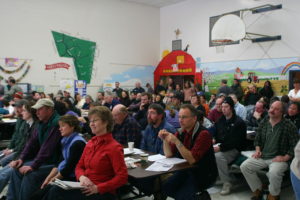Wings of American Community Development
Community Development, as an approach to American state and local economic development, is a aggregate of related movements, each with their own history, conceptual structure, and objectives-constituencies. They
(1) do share a focus on “people” (not business or companies) and seek their economic and political empowerment, improvement in their economic condition, and enhancement of the quality of their life;
(2) customarily draw from “place of residence” (usually a neighborhood or political unit such as a ward or district) or “identity” of the targeted population;
and (3) become more intensely involved with economic development in response of inequalities, injustices, inefficiencies and disruptions derived from “capitalism” and changes. effects, and cross-pressures emanating from the evolution of capitalism or its periodic recessions and depressions.
The individual “elements” of the aggregated community development approach are called “wings” in this online history. I have identified five discernible wings in S&L American economic development. In this module I will introduce the wings and explore the first three that developed before 1890, but will not attempt to summarize their activity through the entire of our history. The active and impactful role of the federal government in CD will also be more apparent, as will the impact of its pullback since the 1970’s (Nixon). Change will be apparent as each wing evolves, and its fortunes ebb and flow through history. All that will be left to future modules.
General Observations on the Structure of CD
From the outset, the reader should be aware that I perceive community development as deeply involved in economic development, but not exclusively economic development in focus or agenda. This has contributed to an irregular involvement in S&L ED. In part, this is a consequence of the “two-party” American party system, which has discouraged third parties (most importantly unions) from institutionalizing themselves into the policy processes.
Social movements with a discernible economic development agenda, even if only one aspect of a larger program, can play an important role and function in economic development. It is not always clear what the dividing line is as to what is a “political movement”, and what constitutes an CD movement. Sanctuary cities is a current example, as is a “sugar tax” on certain products. Minimum wage, on the other hand, appears solid in its ED-content.
Also community development, instinctually, fuses the political with economic even with a solid ED-related agenda. MED has its lobbyists and interest groups; CD its activists and change agents. While MED operates within a rather closed policy process, CD is usually just the opposite. Saul Alinsky (and his successors) achieve their CD aims by any tactic, the more visible and disruptive the better. Those seeking tax abatement scurry around like cockroaches in the dead of night. Between the last two examples one can get a feel for the process distinction between MED and CD.
Because CD draws from a widely-ranging list of “people” and “identity” based concerns, CD has drawn in to ED a correspondingly wide range of “policy areas” normally not thought of as “pure ED”. The best example is housing. Because of CD, housing, in my perspective, has become a central issue in MED and S&L ED–especially, but far from exclusively, at neighborhood-level EDO/CDOs. My history considers the impact of housing so serious and important that, like it or not, it is part of MED-relevant infrastructure. In the Contemporary Era, another policy are, education, from K-12 to university and everything in-between, has been subsumed into MED and S&L ED in much the same manner.
Community developers have most often been the leaders, and a good deal of those involved, in strategies, tools and programs in these associated policy areas. I might add in both instances the definitions of ED-related infrastructure have also widened considerably. To the extent “creativity” involves bike paths and coffee shops one gets a sense of how S&L ED has diffused into a variety of contemporary policy areas formerly not thought of as “mainstream” ED. If the reader “buys into” my MED/CD distinction, one can easily see how our policy area, and our professions(s) can be rather broad and tension-filled. This is yet another reason why siloization and professional fragmentation have become defining features of our Contemporary Era S&L ED.
One can also sense that CD plays, consciously or not, a “checking” function as well as “change” function and to the extent the “movement” concerns itself with “capitalism”, economic growth or decline, and with a jurisdictional economic base, it can have serious effects on MED and S&L ED. Environment, “managed growth”, climate control, and quality of life issues have exerted profound impact (especially during and after the Transition Era) on MED, and S&L ED in general. These values and policy initiatives are included in our treatment of CD, although MED should not be considered inherently anti-environmental for example, as opposed to concerned with how, and to what degree these inputs affect S&L ED.
It seems fair to assert that each CD wing attracts its own constituency of activists, adherents, followers, or members. There can, and have been at times, considerable overlap in “membership” among the wings. Today there is a considerable, and powerful, think tank, policy institute, activist nonprofit-NGO Policy World, that in my opinion, dwarfs that of MED. One might wonder if this Policy World is its own “wing”. For the most part we ignore it in this module. In any case, socio-economic class is a critically important factor, or dynamic, in distinguishing among and between CD wings.
I believe class is a major factor which distinguishes CD wings from MED. MED usually operates within a closed policy system dominated by “business and political elites”, but such elites usually include all classes as they ranged from startups, to small business, to Amazon and Harvard-MIT–politicians are drawn from all classes. Each CD wing on the other hand tends to appeal disproportionately to a particular socio-economic class. Class plays an enormous role in my five wing classification.
The various CD hydra-headed movements developed from both shared and distinctive dynamics and causes, can, and have, cooperated and conflicted with each other. And while each wing is generally congruent with our defined Progressive culture, Privatists can, and do,develop their own forms of CD. Yes, there are Privatist CD initiatives and strategies. One CD Wing (see the First below) is conventionally thought as being principally Privatist at heart. Yet that wing arguably is CD’s most powerful and impactful wing. There is a serious and important Privatist dimension to Second and Third Wing as well. The reverse is less true, however. CD has struggled to develop and employ a Progressive form of MED, particularly at the city and state-wide level. More on this in future modules.
Nevertheless, from Classical Era onward, CD movements seldom aspire to takeover municipal and state governments. The major pre-Transition Era exception, and an important one, was the series of “social reform” and socialist mayors/ governors during the Progressive Age (post-1900). As early as the 1850 ‘s “machines” of various types have pushed quasi-CD agendas, especially in our Big Cities/States.
The Age of Urban Renewal (1928-1974) can be thought of as a period in which CD and MED struggled to impose on the federal government, and local policy systems their respective definition (strategies/goals) of urban renewal . During that Age each side developed its own CDO/EDO (housing or CBD redevelopment). One of MED’s two professional associations (CUED) indirectly arose out of that turmoil. The legacy of several decades struggle left its mark on the Policy World, and deepen the chasm between practitioners of the two approaches.
MED/CD tension has only accelerated since WWII and the War on Poverty and Great Society probably changed the relationship between the two permanently. Today, it is not unusual that municipal and state governments often maintain separate EDOs-CDOs to operate these approaches, or even create separate subdivisions within a larger EDO. It is not currently unusual for a policy system to evolve a bifurcated policy system: MED and CD. One can also sense this disruption in President Trump’s fusion of CD Privatist populism and MED into global trade and immigration. The “hollowing out” and automation/productivity/ artificial intelligence impacts of technology and innovation further stimulate CD/MED tension and ambiguity. The CD/MED distinction has become a central defining feature of our Contemporary Era.
Having completed these general observations and introduction to the CD Wings it is best to immediately proceed onto the next Module which outlines the Five Wings of Community Development




